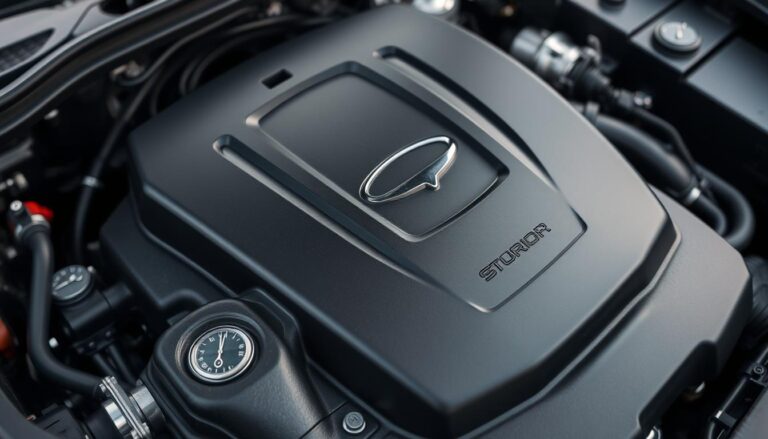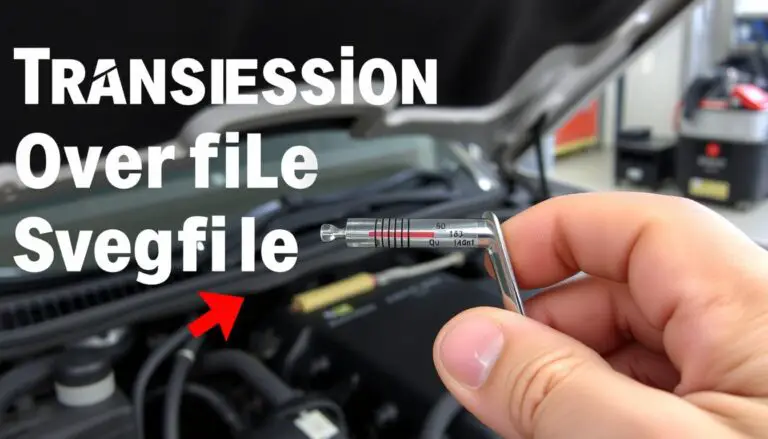Maintaining your vehicle’s engine cooling system is crucial for its longevity and performance. One often overlooked aspect is radiator maintenance. Over time, radiators can accumulate debris and corrosion, hindering their efficiency. A clean radiator is essential for preventing overheating and ensuring your engine operates smoothly.
Using vinegar as a cleaning agent has gained popularity due to its effectiveness and eco-friendly nature. Vinegar helps dissolve mineral deposits and corrosion within the radiator, restoring its functionality without causing damage. This method is not only cost-effective but also straightforward, making it an attractive solution for DIY enthusiasts and car owners alike.
Key Takeaways
- Regular radiator maintenance is crucial for engine performance.
- Vinegar is an effective and eco-friendly cleaning agent.
- Cleaning the radiator with vinegar can prevent overheating.
- This method is cost-effective and easy to implement.
- Regular maintenance can extend the life of your vehicle’s engine.
Why You Should Clean Your Car’s Radiator
Neglecting your car’s radiator can lead to serious engine damage and costly repairs. The radiator plays a crucial role in maintaining the optimal engine temperature, and its maintenance is often overlooked until problems arise.
Signs Your Radiator Needs Flushing
Several signs indicate that your radiator needs flushing. These include:
- Overheating engine
- Discolored or dirty coolant
- Leaks around the radiator
- Unusual noises from the radiator
If you notice any of these symptoms, it’s essential to take action promptly to avoid further damage.
The Dangers of a Clogged Radiator
A clogged radiator can cause significant problems, including engine overheating, reduced performance, and potentially catastrophic engine failure. Regular cleaning and maintenance can prevent these issues, ensuring your car runs efficiently and effectively.
The benefits of cleaning your radiator with vinegar include removing corrosion and deposits without causing damage to the radiator or engine components. This method is both cost-effective and environmentally friendly.
Understanding Vinegar as a Radiator Cleaning Solution
The use of vinegar in flushing radiators has become a DIY favorite due to its efficacy in removing corrosion and deposits. Vinegar’s acidic nature makes it a potent cleaning agent capable of dissolving mineral buildup and rust within the radiator.
How Vinegar Works Against Corrosion and Deposits
Vinegar works by breaking down the corrosion and mineral deposits that can clog a radiator. The acid in vinegar, primarily acetic acid, reacts with the alkaline substances causing the buildup, effectively dissolving them. This process helps restore the radiator’s efficiency and ensures the cooling system operates smoothly.
The key benefits of using vinegar include:
- Effective removal of corrosion and mineral deposits
- Environmentally friendly and non-toxic
- Cost-efficient compared to commercial cleaners
Types of Vinegar to Use (and Avoid)
Not all vinegars are created equal when it comes to radiator cleaning. White vinegar is the most recommended type due to its high acetic acid content and lack of coloring agents that could potentially stain or clog the radiator.
Types of vinegar to avoid include:
- Apple cider vinegar, as it may contain sediment that could clog the radiator
- Balsamic vinegar, due to its thick consistency and potential for staining
- Red wine vinegar, as it can leave behind residues
Benefits and Limitations of Vinegar Compared to Commercial Cleaners
Vinegar offers several benefits over commercial radiator cleaners, including being environmentally friendly and cost-effective. However, it may not be as effective in severe cases of corrosion or when dealing with certain types of deposits.
A comparison of vinegar and commercial cleaners is as follows:
| Cleaning Agent | Environmental Impact | Cost | Effectiveness |
|---|---|---|---|
| Vinegar | Low | Low | High for mild cases |
| Commercial Cleaners | Varies | High | High for severe cases |
In conclusion, vinegar is a viable and effective solution for radiator maintenance, offering a natural and cost-efficient alternative to commercial cleaners. Understanding its benefits and limitations is crucial for determining the best approach for your vehicle’s needs.
Materials and Tools You’ll Need
The success of flushing your radiator with vinegar largely depends on having the right materials and tools at hand. As emphasized by a leading automotive expert,
“Preparation is key to a successful DIY radiator flush.”
Ensuring you have everything needed before starting the process will make it smoother and safer.
Essential Supplies Checklist
To begin, you’ll need a few essential supplies. These include:
- A high-quality radiator flush kit that is compatible with your vehicle’s make and model.
- A sufficient amount of vinegar for creating the flushing solution.
- A drain pan to catch the old coolant and vinegar solution.
- A garden hose for flushing the system with water.
- New coolant to refill the radiator after the flush.
Safety Equipment Requirements
Safety should be your top priority when working with potentially corrosive substances like vinegar. Ensure you have the following safety equipment for DIY radiator flush:
- Protective gloves to prevent skin contact with coolant and vinegar.
- Safety goggles to protect your eyes from splashes.
- A face mask to avoid inhaling fumes.
By having all the necessary materials and tools ready, you’ll be well-prepared to safely and effectively flush your radiator with vinegar.
Flushing Radiator With Vinegar: How To Use It This Easy Method!
A vinegar-based radiator flush is an easy and environmentally friendly way to remove corrosion and deposits from your car’s cooling system. This method is not only cost-effective but also efficient in maintaining your vehicle’s health.
Preparing Your Vehicle
Before you start the flushing process, ensure your vehicle is parked on a level surface and the engine is cool. This is a crucial safety precaution to avoid any accidental injuries or damage to the engine. Locate the radiator cap, usually marked with a symbol or colored red or black.
Draining the Old Coolant
To drain the old coolant, you’ll need to locate the drain valve at the bottom of the radiator. Place a pan under the valve to catch the coolant, then open the valve. Be cautious as the coolant may still be hot and under pressure.
Creating the Perfect Vinegar Solution Ratio
The ideal vinegar solution ratio is crucial for effectively cleaning the radiator without causing damage. A commonly recommended ratio is 50% vinegar to 50% water. However, this can vary depending on the level of corrosion and deposits. It’s essential to consult your vehicle’s manual or a reliable source like Automotive Simple for specific guidance.
| Vinegar Solution Ratio | Application |
|---|---|
| 50% Vinegar / 50% Water | General Cleaning and Maintenance |
| 25% Vinegar / 75% Water | Mild Corrosion |
| 75% Vinegar / 25% Water | Heavy Corrosion |
Adding the Vinegar Solution
Once you’ve prepared the vinegar solution, carefully pour it into the radiator, making sure not to spill any on the surrounding components. Replace the radiator cap securely.
Running the Engine with Vinegar
Start the engine and let it run for a few minutes to circulate the vinegar solution through the cooling system. Monitor the temperature gauge to ensure the engine doesn’t overheat. This step is crucial for loosening corrosion and deposits.

By following these steps, you can effectively flush your radiator with vinegar, maintaining your vehicle’s cooling system and potentially extending its lifespan.
Completing the Flush Process
After circulating the vinegar solution through your radiator, it’s crucial to complete the flush process to ensure your cooling system is clean and free of any remaining debris.
Draining the Vinegar Solution
The first step in completing the flush is to drain the vinegar solution from your radiator. Locate the drain valve or petcock, typically found at the bottom of the radiator. Be sure to open it slowly to avoid any sudden spills. It’s essential to wear protective gloves and eyewear during this process to prevent skin and eye irritation from the acidic vinegar solution.
Flushing with Clean Water
Once the vinegar solution is drained, the next step is to flush the system with clean water. This helps remove any remaining vinegar and loosened debris. Use distilled water to prevent any mineral deposits from forming in your cooling system. Circulate the water through the system by running the engine with the radiator cap off, then drain it again.
Adding New Coolant
With the system flushed, it’s time to add new coolant. Choose a coolant that is compatible with your vehicle’s specifications. For more information on selecting the right coolant, you can visit Automotive Simple for additional resources.
| Coolant Type | Vehicle Compatibility | Recommended Use |
|---|---|---|
| Ethylene Glycol | Most passenger vehicles | Standard use |
| Propylene Glycol | Vehicles requiring non-toxic coolant | Special applications |
| Hybrid Coolant | Vehicles specifying hybrid coolant | For specific vehicle models |
Proper Disposal of Used Fluids
Finally, it’s crucial to properly dispose of the used vinegar solution and coolant. These fluids are considered hazardous waste and should be taken to a recycling center or an auto parts store that accepts used coolant for proper disposal. Never dispose of these fluids by dumping them down the drain or onto the ground.
Troubleshooting Common Issues
Troubleshooting is a crucial step when flushing your radiator with vinegar to ensure the process is successful. While vinegar is a natural and effective cleaning agent, its use can sometimes lead to unforeseen issues such as stubborn deposits, leaks, or engine overheating. Understanding how to address these problems is essential for a smooth and effective radiator flushing process.
Dealing with Stubborn Deposits
If you encounter stubborn deposits after flushing your radiator with vinegar, there are a few steps you can take. First, ensure that the vinegar solution was of the appropriate concentration and that it was left to circulate for a sufficient amount of time. If the deposits persist, you may need to repeat the flushing process or consider using a commercial cleaning product designed to tackle tough deposits.
Addressing Leaks After Flushing
Leaks can sometimes become apparent after flushing your radiator. This could be due to the removal of corrosion or debris that was previously blocking a leak. If you notice a leak, it’s crucial to address it promptly. Inspect your radiator and associated pipes for any signs of damage or corrosion. Tightening loose connections or replacing damaged parts may be necessary.

Engine Overheating After Flush
Engine overheating after a radiator flush can be a sign of several issues, including a malfunctioning thermostat, low coolant level, or a clogged radiator. Ensure that your coolant level is adequate and that the radiator is not clogged. If the problem persists, it may be necessary to inspect the thermostat or consult a professional mechanic.
When to Seek Professional Help
If you encounter any of the above issues and are unsure of how to resolve them, or if the problems persist after attempting to troubleshoot, it’s time to seek professional help. A qualified mechanic can diagnose and fix complex issues, ensuring your vehicle’s cooling system operates efficiently and safely.
| Issue | Potential Solution |
|---|---|
| Stubborn Deposits | Repeat flushing process, use commercial cleaning product |
| Leaks After Flushing | Inspect and tighten connections, replace damaged parts |
| Engine Overheating | Check coolant level, inspect thermostat, ensure radiator is not clogged |
Maintenance Schedule: When to Flush Your Radiator Again
To keep your vehicle’s engine running smoothly, it’s essential to follow a proper radiator maintenance schedule. Regular flushing of the radiator is a critical aspect of this maintenance, as it helps remove corrosion and deposits that can impede the cooling system’s efficiency.
Different vehicles have different requirements when it comes to radiator flushing. The frequency of flushing depends on several factors, including the type of vehicle, its age, and the driving conditions it’s subjected to.
Recommended Flushing Intervals by Vehicle Type
The recommended flushing intervals can vary significantly based on the vehicle type. For instance:
- Most passenger vehicles require a radiator flush every 30,000 to 50,000 miles.
- Heavy-duty vehicles or those used for towing may need more frequent flushing, typically every 15,000 to 30,000 miles.
- Older vehicles might require more frequent maintenance due to potential corrosion and wear.
It’s crucial to consult your vehicle’s owner’s manual for the manufacturer’s recommended flushing intervals. Adhering to this schedule can help prevent overheating and prolong the life of your engine.
Signs That Indicate Early Flushing is Needed
Sometimes, a vehicle may need a radiator flush sooner than the recommended interval. Signs that indicate the need for an early flush include:
- Overheating engine: If your engine is consistently running hotter than usual, it could be a sign of a clogged radiator.
- Discolored coolant: If the coolant appears rusty or dirty, it’s a clear indication that the radiator needs flushing.
- Leaks: Visible leaks or signs of moisture around the radiator area can indicate internal corrosion or damage.
Being vigilant about these signs and taking prompt action can save you from costly repairs down the line. Regular checks and maintenance can ensure your radiator operates efficiently, keeping your vehicle running smoothly.
Conclusion
Flushing your radiator with vinegar is a simple and effective way to remove corrosion and deposits, ensuring your vehicle’s cooling system operates efficiently. By following the steps outlined in this guide, you can enjoy the benefits of flushing radiator with vinegar, including improved engine performance and extended radiator lifespan.
Regular radiator maintenance is crucial to prevent overheating and costly repairs. To keep your radiator in top condition, remember to check your coolant levels regularly and look out for signs of leaks or corrosion. By incorporating radiator maintenance tips into your routine, you can help prevent common issues and ensure your vehicle runs smoothly.
By adopting these simple maintenance habits, you can enjoy a healthier engine, improved fuel efficiency, and reduced risk of breakdowns. Whether you’re a seasoned DIY enthusiast or a car owner looking to take control of your vehicle’s maintenance, using vinegar to flush your radiator is a cost-effective and environmentally friendly solution.
FAQ
What type of vinegar is best for flushing my car’s radiator?
White vinegar is the most recommended type for radiator flushing due to its mild acidity and effectiveness in dissolving mineral deposits.
How often should I flush my car’s radiator with vinegar?
The frequency depends on your vehicle’s type and usage. Generally, it’s recommended to flush your radiator every 30,000 to 50,000 miles, but check your owner’s manual for specific guidelines.
Can I use vinegar to flush my radiator if I have an aluminum radiator?
Vinegar can be used on aluminum radiators, but it’s crucial to dilute it properly to avoid corrosion. A 50/50 mix of water and vinegar is usually safe.
Will flushing my radiator with vinegar damage my engine or other components?
When done correctly, flushing with vinegar should not damage your engine or other components. However, it’s essential to follow the proper procedure and thoroughly flush the system with clean water afterward.
Can I mix vinegar with my car’s coolant?
No, you should not mix vinegar with your car’s coolant. Instead, drain the coolant, add the vinegar solution, and then refill with new coolant after flushing.
How do I dispose of the used vinegar solution and coolant?
Used coolant and vinegar solution should be disposed of at a local recycling center or an auto parts store that accepts used automotive fluids, following local regulations and guidelines.
Are there any signs that indicate my radiator needs flushing before the recommended interval?
Yes, signs such as overheating, leaks, or discolored coolant can indicate that your radiator needs flushing sooner rather than later.
Can I use commercial radiator cleaners instead of vinegar?
Yes, commercial cleaners are available, but vinegar is a cost-effective and environmentally friendly alternative that is just as effective when used properly.


